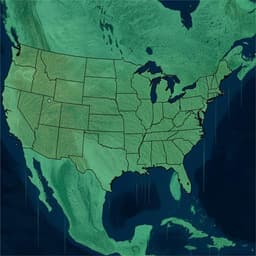
Earth Sciences
Acceleration of U.S. Southeast and Gulf coast sea-level rise amplified by internal climate variability
S. Dangendorf, N. Hendricks, et al.
This groundbreaking research reveals a rapid sea-level rise along the U.S. Southeast and Gulf coasts since 2010, the fastest observed in over a century. Conducted by authors including Sönke Dangendorf and Noah Hendricks, this study explores the interplay between ocean dynamics and climate variability, highlighting an urgent environmental concern.
~3 min • Beginner • English
Related Publications
Explore these studies to deepen your understanding of the subject.







